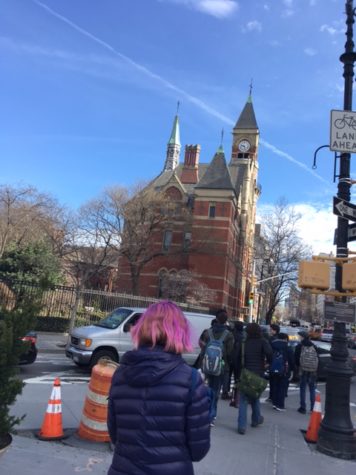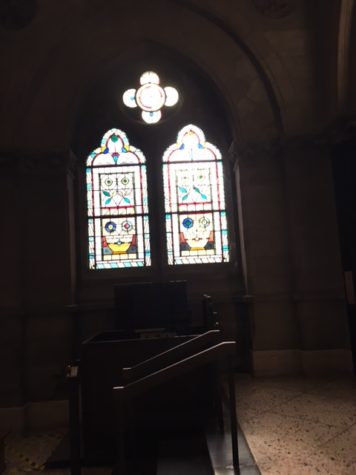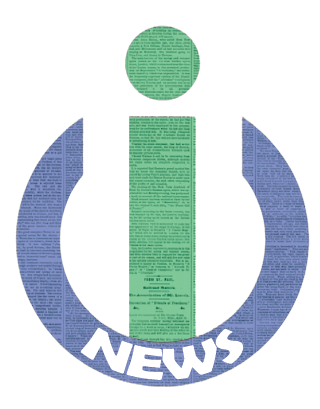History and Photography: A module
May 11, 2017
History and Photography, which is taught by Ms. Asher, is a unique and intriguing module offered at the NYC iSchool. This course examines the historical significance of photography and how photographs possess multiple, important stories in a single image.
Each week, students take photos of themselves to represent a certain theme. Some of these themes include emotional reactions, personal values and recreating historical photographs. Every Friday, students critique their photographs by stating what they would have done differently, what they liked about the photo, and how they edited the photo to make it more clearly fit the theme.
At the end of the quarter, students choose four of their photos and write a descriptive artist statement to help explain the meaning and inspiration behind their photos. After this, they create a photo gallery to present at the Jefferson Market Library, located on the southwest corner of West 10th street and Sixth Avenue.

When I interviewed Ms. Asher about what inspired her to create the module, she responded, “I took a class at Harvard last summer that was all about American protest literature and photography. My professor made a museum exhibit and also wrote a book about Frederick Douglass, which was my main inspiration for creating this class.”
One particularly interesting assignment given about halfway through the module is a slideshow presentation concerning a certain historical figure. Students choose four to six photographs of a historical figure and explain how those photos relate to the historical time period. Students also explain how that person was most likely feeling during the photo.
Another intriguing assignment given towards the end of the module, along with the final project of the photo gallery, is a two to three page essay concerning students’ personal growth throughout the class. Students explain topics such as their overall experience as the subject of various photos, how their view on crafting an image has changed, and how their personality may impact their decisions in the future.
They also use evidence from journal entries they have written in their notebooks throughout the course to support their responses. In this module, journal entries are responses to certain prompts that usually are connected to the subject of the class for each day. Most importantly, students describe their overall growth throughout the class and how they might use photography in their daily lives in the future. I found this assignment interesting because it allowed me to reflect on my personal growth throughout the class and introduced me to how various forms of photography impact the modern world.
When I interviewed Max Eichenbaum, a freshman at the NYC iSchool who had taken the History and Photography module with me last quarter, he shared his thoughts about the course. When asked about what specific factor he enjoyed most concerning the photo gallery presentation, and if there was anything he disliked, he responded, “What I liked about the gallery was that it was rewarding to have people see my photos and the hard work I put into them. I would say one downside of the presentation, however, was that not many people actually came.”
When asked about the meaning and inspiration behind his photos, he stated, “My overall theme for the photos I presented was to show different parts of who I am as a person. Some of my themes included the ongoing problem of climate change and my interest in reading. I also edited my photos to help advance the meaning of my theme.”
Ms. Asher, enthusiastic about the final photo gallery presentation, stated, “I feel like the presentation really gave the students control over what they could do with their photos. Between its visual and writing component, I think it really allowed students to express themselves.”
Sabiq Kennedy, another freshman who took this module last quarter, agreed. “I liked that people actually came to our photos to observe them. There actually wasn’t really anything I disliked,” he said. He also mentioned that he purposely created an unusual theme for his photos; he took them of things naturally occurring in his daily life, rather than focusing on one specific topic.
The Jefferson Market Library was the perfect place to host the photo gallery presentation, due to its fascinating history. It was constructed by architects Frederick Clark Withers and Calvert Vaux from 1875 to 1877, who also assisted in the design of Central Park. It was initially a courthouse, serving the citizens of the Greenwich Village community for over forty years. At one point, it was also a police station. Offices and chambers were scattered in various places around the building, which received national attention. Furthermore, many famous trials were conducted here. One prominent example was the author of The Red Badge of Courage, Stephen Crane, testifying on behalf of a woman who he felt was wrongly accused of prostitution.

Overall, History and Photography is an engrossing module. I recommend this course to anyone interested in photography and photo editing as well as historical time periods that have greatly impacted modern society.


